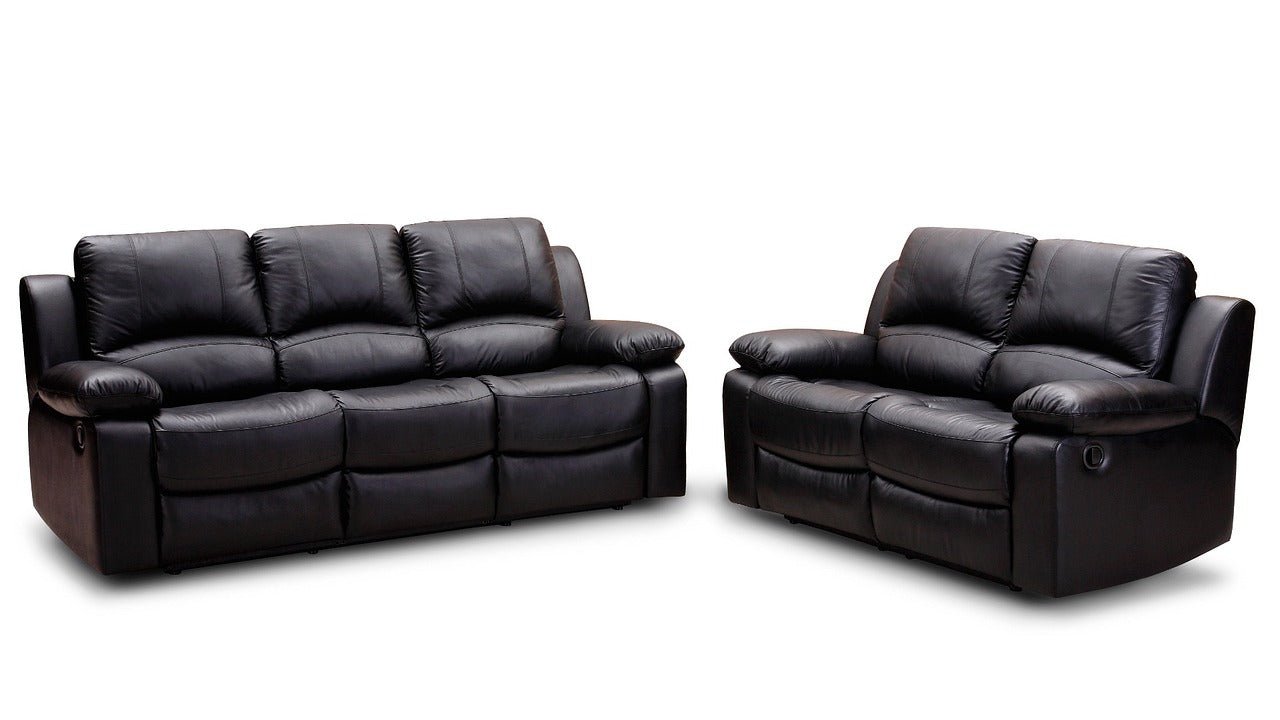A leather recliner is an investment in comfort and style, adding a touch of elegance to any living space. However, without proper care, leather can dry out, crack, and lose its luxurious appearance. Regular maintenance not only preserves the recliner’s aesthetics but also extends its lifespan, ensuring years of relaxation and enjoyment.
Cleaning and conditioning your leather recliner requires the right approach, tools, and techniques to prevent damage. This comprehensive guide covers everything you need to know about maintaining your leather recliner, from routine cleaning to tackling stubborn stains.
Preparing to Clean Your Leather Recliner
Before starting the cleaning process, it is essential to gather the necessary tools and inspect your recliner for any signs of wear or damage. Proper preparation ensures an efficient cleaning routine without harming the leather.
Steps for Initial Preparation
-
Read the Manufacturer’s Instructions – Check the care label for specific cleaning recommendations.
-
Inspect the Recliner – Identify any cracks, stains, or scratches that need special attention.
-
Perform a Spot Test – Test any cleaning solution on an inconspicuous area to ensure it does not discolor the leather.
Essential Cleaning Tools and Products
-
Soft microfiber cloths – Ideal for dusting and applying cleaning solutions.
-
Mild leather cleaner or soap – Gentle formulas that clean without damaging the material.
-
Leather conditioner – Restores moisture and prevents cracking.
-
Vacuum with a soft brush attachment – Removes dust and debris from crevices.
-
Distilled water – Prevents mineral deposits left by tap water.
Step-by-Step Cleaning Guide
Routine Cleaning: Vacuuming and Dusting
-
Dust the Surface – Wipe the recliner with a dry microfiber cloth to remove dust and dirt.
-
Vacuum Crevices – Use a vacuum cleaner with a soft brush attachment to clean seams and folds.
-
Wipe with a Damp Cloth – Lightly dampen a cloth with distilled water and wipe down the leather.
Removing Stains and Spills
-
Water-based stains – Use a mild soap solution and gently rub the area with a microfiber cloth.
-
Oil and grease stains – Sprinkle baking soda or cornstarch over the stain and let it sit for a few hours before wiping it off.
-
Ink stains – Dab the stain lightly with a cotton swab dipped in rubbing alcohol.
-
Dark spots – Create a paste using lemon juice and cream of tartar, apply it, and wipe it off after 10 minutes.
Dealing with Different Leather Types
Understanding the type of leather your recliner is made of is crucial, as each requires specific care.
-
Full-Grain Leather – Clean with a damp cloth and condition regularly to maintain its natural patina.
-
Top-Grain Leather – Requires periodic conditioning to preserve its appearance.
-
Bonded Leather – Avoid excessive moisture; use gentle cleaning products.
-
Faux Leather – Clean with a mild soap solution; avoid harsh chemicals.
Conditioning and Protecting Your Recliner
Leather conditioning is essential to maintaining the recliner’s softness and preventing cracks. Apply a high-quality leather conditioner every 3 to 6 months.
Best Practices for Conditioning
-
Apply the Conditioner – Use a soft cloth to rub the conditioner evenly over the recliner.
-
Let It Absorb – Allow the conditioner to sit for at least an hour before wiping off excess product.
-
Buff the Leather – Use a dry cloth to buff the recliner, restoring its natural shine.
Advanced Maintenance Tips
Avoid Common Cleaning Mistakes
-
Do not use harsh chemicals like bleach or ammonia.
-
Avoid using too much water, as it can weaken the leather.
-
Never expose your recliner to direct sunlight for prolonged periods.
Maintaining Mechanical Parts
-
Lubricate the reclining mechanism regularly to prevent squeaks.
-
Check for loose screws and tighten them as needed.
Solving Common Leather Issues
Cracking and Dryness
-
Condition the leather more frequently if it starts feeling dry.
Peeling or Flaking
-
If bonded leather is peeling, use a leather repair kit to restore the surface.
Persistent Odors
-
Wipe with a water and vinegar solution to neutralize odors.
Establishing a Maintenance Routine
A well-maintained recliner remains in excellent condition for years. Follow this routine to keep it looking great:
-
Weekly – Dust and wipe down with a microfiber cloth.
-
Monthly – Vacuum and deep clean any spills or stains.
-
Every 3-6 Months – Condition the leather to retain moisture.
-
Yearly – Inspect for structural issues and repair as necessary.
If deeper restoration is needed, high-quality leather care solutions such as those from Pecard Leather Care help maintain the leather’s softness and prevent cracking.
Regular cleaning and conditioning are essential to maintaining the beauty and durability of your leather recliner. With proper care, your recliner can remain a stylish and comfortable fixture in your home for many years.
For the best results, consider using premium leather care products that nourish and protect the leather, preventing premature aging. Pecard Leather Care offers high-quality leather conditioners and cleaners that effectively preserve leather furniture, keeping it in pristine condition for years.
FAQs
How often should leather recliners be cleaned?
Routine dusting should be done weekly, while deep cleaning and conditioning should be performed every 3 to 6 months, depending on use.
What cleaning products are safe for leather furniture?
Use mild, pH-balanced leather cleaners and conditioners specifically formulated for genuine leather.
How can I quickly address spills on my leather recliner?
Blot spills immediately with a dry cloth, then clean with a mild soap solution. Avoid rubbing, as it can spread the stain.
Can steam cleaning be used on leather furniture?
No, steam can damage leather by stripping away its natural oils and causing it to dry out or crack.
What should I do if my leather recliner starts to crack or peel?
If your recliner is cracking, condition it more frequently. For peeling bonded leather, consider a leather repair kit or seek professional restoration services. For the best long-term care, use a high-quality conditioner like those from Pecard Leather Care to maintain the leather’s integrity.






